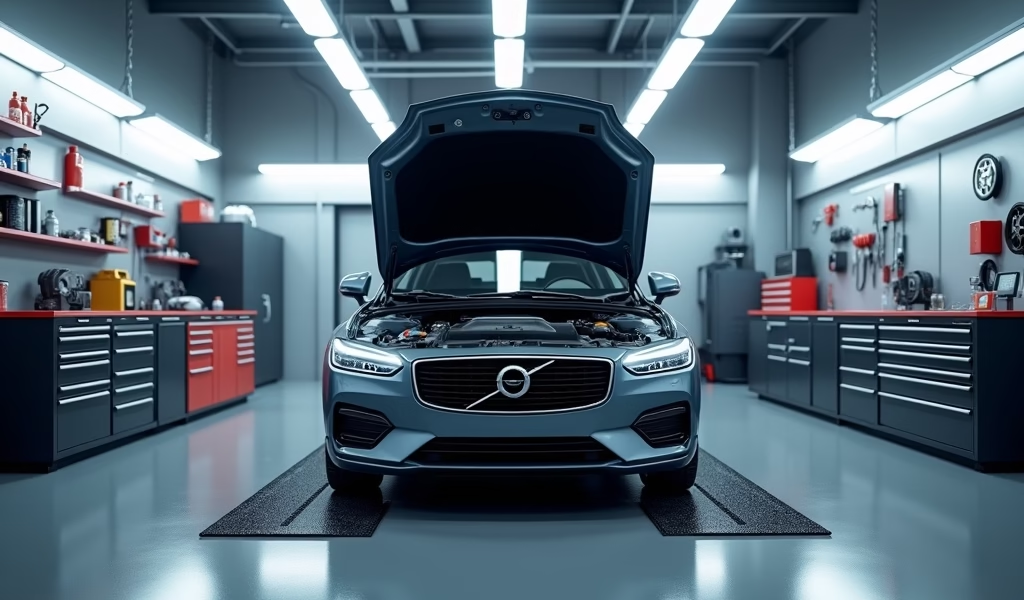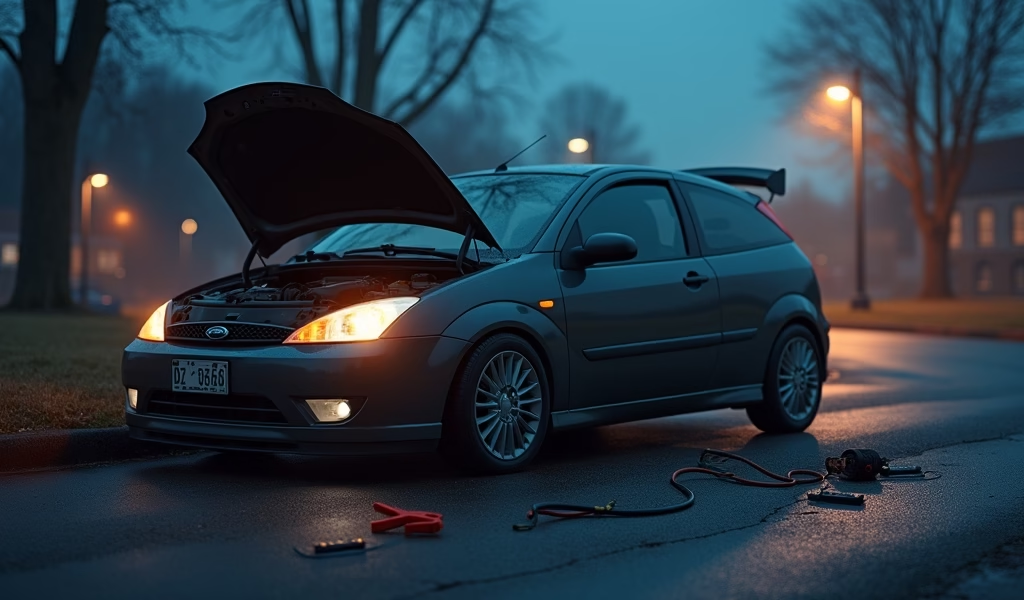Overview
This article provides seven essential car maintenance strategies for students to reduce auto insurance costs, including regular maintenance, tire care, fluid checks, battery maintenance, emergency preparedness, and using technology tools. By demonstrating responsible vehicle care through these practices, students can qualify for insurance discounts while building good habits that extend beyond car ownership.
Table of Contents
- Understanding Student Auto Insurance: What Makes It Different
- Regular Maintenance: Your First Line of Defense
- Tire Care: The Foundation of Safe Driving
- Fluid Checks: Keeping Your Car’s Lifeblood Flowing
- Battery Maintenance: Prevent Those Morning Surprises
- The Essential Student Emergency Kit
- Tech Tools: Apps and Gadgets for Modern Car Care
- Conclusion: Taking Charge of Your Car Care Journey
- Frequently Asked Questions
Understanding Student Auto Insurance: What Makes It Different
Navigating student auto insurance can feel like deciphering an engine manual written in another language. As a mechanic who’s helped countless students keep their vehicles running on tight budgets, I’ve seen firsthand how proper car care directly impacts those monthly premiums. Student auto insurance typically costs more because insurance companies see younger drivers as higher risk—but there are ways to turn that equation in your favor.
The good news? Students who demonstrate responsibility through proper vehicle maintenance often qualify for significant discounts. Insurance providers look favorably on those who invest time in preventative care because it shows maturity and reduces the likelihood of claims. In fact, many car insurance for students policies offer specific “safe driver” or “vehicle maintenance” discounts that can save you hundreds each year.
What makes student insurance unique is that you’re building your insurance history from scratch. Just like establishing credit, your early years set patterns that can follow you for decades. Taking care of your vehicle doesn’t just save you money today—it establishes habits that insurance companies will reward you for throughout your driving life.
Regular Maintenance: Your First Line of Defense
Think of regular maintenance as preventative medicine for your car—and a vaccination against high insurance rates. The most cost-effective approach to car ownership is addressing small issues before they become major repairs or, worse, accidents that affect your insurance standing.
Start with your owner’s manual. I know it’s probably stuffed in your glove compartment collecting dust, but this little book is actually your roadmap to optimal maintenance schedules. Manufacturers design these schedules specifically for your vehicle model, and following them can extend your car’s life by years.
Here’s a simple maintenance schedule that works for most vehicles:
- Every 3,000-5,000 miles: Oil and filter change (synthetic oil can go longer)
- Every 6,000 miles: Rotate tires and check alignment
- Every 15,000-30,000 miles: Air filter replacement
- Every 30,000 miles: Major service check (transmission fluid, coolant, etc.)
- Twice yearly: Thorough inspection before winter and summer
Many students I’ve worked with create calendar reminders for these services. Even better, some research from Consumer Reports shows that regular maintenance can reduce overall ownership costs by up to 42% over five years—money that goes straight back into your pocket.
Remember, documentation matters. Keep all maintenance records organized—whether digitally or in a folder. These records not only help with resale value but can also serve as evidence of responsible ownership when negotiating with insurance providers for better rates. Some best insurance for young drivers programs actually reward documented maintenance with lower premiums.

Tire Care: The Foundation of Safe Driving
Your tires are literally where the rubber meets the road, and they’re surprisingly crucial to both safety and insurance costs. Many students I counsel are shocked to learn that proper tire maintenance can improve fuel efficiency by up to 3%—saving you money at the pump while reducing wear on other components.
First, let’s talk pressure. Checking your tire pressure monthly takes less than five minutes but pays enormous dividends. Under-inflated tires increase stopping distances and reduce handling—both factors that can lead to accidents and subsequent insurance claims. Most gas stations offer free air, and a simple pressure gauge costs less than $5.
The correct pressure isn’t what’s stamped on the tire sidewall (that’s the maximum). Instead, look for a sticker inside your driver’s door jamb or check your owner’s manual. Different seasons require slight pressure adjustments, so check more frequently during temperature transitions.
Next, rotate your tires every 5,000-7,000 miles. This ensures even wear patterns and extends tire life significantly. Many quick-lube places offer free rotation with oil changes, making it practically free to maintain. While they’re off, inspect for uneven wear patterns, which could indicate alignment issues that, if caught early, are inexpensive to fix.
Finally, learn to check tread depth—it’s easier than you think. The penny test works well: insert a penny with Lincoln’s head upside down into the tread. If you can see the top of his head, your tread is too worn, and it’s time for new tires. Driving on bald tires dramatically increases your accident risk and could even lead to insurance denial if you’re in an accident with visibly unsafe tires.
Fluid Checks: Keeping Your Car’s Lifeblood Flowing
Your car runs on more than just gasoline. Multiple fluids work together to keep everything running smoothly, and checking them regularly is one of the easiest DIY maintenance tasks any student can master. Think of these fluids as your car’s vital signs—monitoring them can prevent catastrophic failures.
Engine oil is the most critical fluid in your vehicle. It lubricates the engine’s moving parts, reduces friction, helps cool the engine, and prevents corrosion. Checking your oil level takes less than two minutes: park on level ground, wait for the engine to cool, pull out the dipstick, wipe it clean, reinsert it, and pull it out again to check the level. The oil should be between the minimum and maximum marks, and its color should be amber or light brown—not black or gritty.
Coolant (or antifreeze) prevents your engine from overheating in summer and freezing in winter. Check this only when the engine is completely cool by looking at the transparent overflow reservoir. Most have clear “min” and “max” lines. If it’s low, top it off with a 50/50 mix of coolant and distilled water. Never open the radiator cap when the engine is hot—the pressurized fluid can cause severe burns.
Other fluids to monitor include:
- Brake fluid: Critical for stopping power; should be checked monthly
- Transmission fluid: Helps your car shift smoothly; check according to manual guidelines
- Power steering fluid: Makes steering effortless; low levels cause steering wheel stiffness
- Windshield washer fluid: Not critical to operation but essential for visibility and safety
Many students I’ve worked with set calendar reminders for monthly fluid checks. Just five minutes on the first Saturday of each month can prevent thousands in repair costs. According to automotive experts at Edmunds, up to 60% of roadside breakdowns are related to fluid issues that could have been caught during basic checks.
Battery Maintenance: Prevent Those Morning Surprises
Nothing derails your day faster than a car that won’t start—especially when you’re already running late for class. The battery is often the culprit, and yet it’s one of the most neglected components in student vehicles. Proper battery maintenance can extend its life from the typical 3-5 years to 7+ years, saving you both money and frustration.
Start by inspecting your battery terminals for corrosion—that white, powdery substance that accumulates around the connections. This buildup increases electrical resistance and can prevent proper charging. Cleaning terminals is simple: disconnect the battery (negative terminal first), make a paste with baking soda and water, scrub with an old toothbrush, rinse with water, dry thoroughly, and reconnect (positive terminal first).
Many battery issues stem from parasitic drains—electrical draws that continue even when your car is off. Common culprits include dome lights left on, phone chargers plugged in, or aftermarket electronics with poor installation. A quick visual check before leaving your car can prevent most of these problems.
If you’re parking your car for extended periods (like during holiday breaks), consider using a battery tender or maintenance charger. These devices maintain optimal charge without overcharging. They’re particularly valuable for students who might leave their vehicles sitting for weeks between uses.
Remember that extreme temperatures are hard on batteries, with heat causing more permanent damage than cold. If you’re in a hot climate, consider having your battery tested more frequently. Most auto parts stores will test your battery for free, giving you an early warning before failure occurs.

The Essential Student Emergency Kit
Every student should have a basic emergency kit in their vehicle. This isn’t just good advice—it’s directly connected to your insurance situation. Being prepared for roadside emergencies reduces the severity of incidents and can prevent minor situations from escalating into insurance claims.
Your student emergency kit doesn’t need to be elaborate or expensive. Most items can be purchased for under $50 total, and many students already have some components. Here’s what I recommend to the young drivers I work with:
- Jumper cables (or a portable jump starter for even more independence)
- Flashlight with extra batteries
- Basic first-aid kit
- Tire pressure gauge
- Duct tape (surprisingly versatile for temporary repairs)
- Reflective warning triangles or road flares
- Spare phone charger
- Blanket (useful in winter emergencies)
- Small tool kit with screwdrivers, pliers, and adjustable wrench
- $20 in small bills (for emergencies when cards aren’t accepted)
Some insurance companies actually offer discounts for drivers who carry emergency kits, particularly those with cheap car insurance for young drivers programs. Even without the discount, having these supplies can prevent small issues from becoming expensive tows or roadside assistance calls that might affect your insurance history.
Beyond physical items, store important contact information in your phone: your insurance company’s claims number, roadside assistance provider, and a trusted mechanic. Many students I’ve worked with also take photos of their insurance card and vehicle registration to have digital backups available.
Tech Tools: Apps and Gadgets for Modern Car Care
Today’s students have access to technology that makes car care easier than ever before. Leveraging these tools can help you maintain your vehicle properly, document your efforts, and potentially earn insurance discounts for responsible ownership.
Maintenance tracking apps like CARFAX Car Care or aCar are free and send reminders when service is due. These apps store your maintenance history, creating a digital record that’s invaluable when it comes time to prove your responsible ownership to insurance companies or when selling your vehicle.
Diagnostic tools have also become more accessible. Basic OBD-II scanners that connect to your smartphone via Bluetooth cost under $30 and can read engine codes when your check engine light illuminates. This knowledge prevents mechanics from charging diagnostic fees and helps you determine whether an issue requires immediate attention.
Dash cams have become increasingly popular and for good reason. These devices continuously record your driving, providing valuable evidence in case of accidents or disputes. Some insurance companies now offer specific discounts for drivers who use dash cams, recognizing their value in establishing fault accurately. According to research from the Insurance Institute for Highway Safety, technologies that help prevent accidents can significantly reduce your risk profile with insurers.
Even simpler tech solutions make a difference. Gas price comparison apps like GasBuddy help you find the cheapest fuel nearby. Parking reminder apps mark your car’s location on a map—particularly useful on sprawling college campuses. Navigation apps with traffic alerts help you avoid congestion that increases wear and tear through constant braking and acceleration.
Remember that many insurance companies now offer their own apps with features like usage-based insurance tracking. These programs monitor your driving habits and reward safe behaviors with discounts—often substantial ones for student drivers with otherwise high premiums.
Conclusion: Taking Charge of Your Car Care Journey
As we’ve explored throughout this guide, proper car care isn’t just about mechanical well-being—it directly impacts your student auto insurance costs and overall financial health. By implementing these seven car care hacks, you’re not just maintaining a vehicle; you’re establishing patterns that will benefit you throughout your driving life.
Remember that insurance companies are essentially betting on your future behavior. By demonstrating responsibility through regular maintenance, proactive tire care, fluid monitoring, battery maintenance, emergency preparedness, and smart use of technology, you’re showing insurers that you’re a good bet—deserving of their best rates and discounts.
The habits you form now as a student driver will likely stay with you for decades. Taking ownership of your vehicle’s care establishes a foundation of responsibility that extends far beyond car maintenance. It’s about learning to manage resources, plan ahead, and prevent problems before they occur—skills that serve well in all areas of life.
Start small if you’re feeling overwhelmed. Even implementing just one or two of these strategies can make a meaningful difference in your vehicle’s longevity and your insurance costs. As your confidence grows, add more practices to your routine until comprehensive car care becomes second nature.
Your journey as a student is about more than classrooms and textbooks—it’s about growing into a responsible adult. Taking proper care of your vehicle is a tangible step in that direction, one that pays dividends both immediately and for years to come.
Frequently Asked Questions
What makes student auto insurance different from regular auto insurance?
Student auto insurance typically has higher premiums due to younger drivers’ limited experience and higher statistical risk. However, it often includes special discounts for good grades, driver’s education courses, and being away at school without a car.
How much can students save on auto insurance with good grades?
Many insurance companies offer “good student” discounts ranging from 5% to 25% for maintaining a B average (3.0 GPA) or higher. This discount recognizes that students who perform well academically often demonstrate more responsible driving behaviors.
Does the type of car affect a student’s insurance rates?
Absolutely. Newer, expensive, high-performance vehicles cost substantially more to insure for students. Choosing a modestly-priced vehicle with good safety ratings and low repair costs can save hundreds of dollars annually on premiums.
Can students stay on their parents’ insurance policy?
Yes, students can usually remain on their parents’ policy as long as they maintain their parents’ address as their primary residence. This arrangement typically offers significant savings compared to purchasing an individual policy.
How does being away at college affect auto insurance?
Many insurers offer a “student away” or “distant student” discount when a student attends college more than 100 miles from home without taking a car. This discount can reduce premiums by 10-30% while maintaining coverage during breaks and visits home.

